Hebrew: בוצין מפורץ, Arabic:عورور
| Scientific name: | Verbascum sinuatum L. | |
| Common name: | Scallop-Leaved Mullein | |
| Hebrew name: | בוצין מפורץ | |
| Arabic name: | عورور | |
| Plant Family: | Scrophulariaceae, לועניתיים |
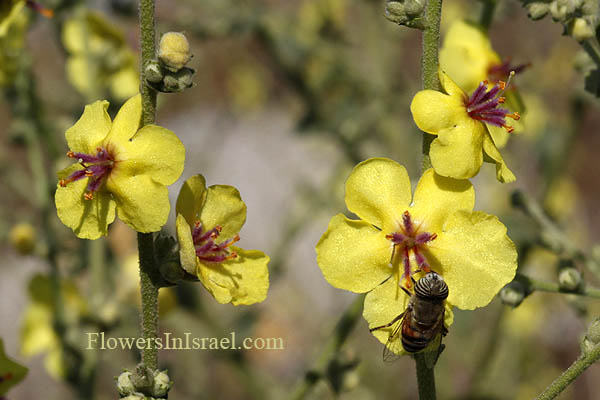
|
| Life form: | Hemicryptophyte | |
| Stems: | 50-100cm | |
| Leaves: | Alternate, rosette, entire, dentate or serrate | |
| Inflorescence: | Freely branched, lax | |
| Flowers: | Yellow; filament-hairs violet | |
| Fruits / pods: | Capsule, subglobose | |
| Flowering Period: | April, May, June, July, August, September, October | |
| Habitat: | Batha, Phrygana | |
| Distribution: | The Mediterranean Woodlands and Shrublands, Semi-steppe shrublands, Shrub-steppes, Deserts and extreme deserts, Montane vegetation of Mt. Hermon | |
| Chorotype: | Med - Irano-Turanian | |
| Summer shedding: | Perennating |
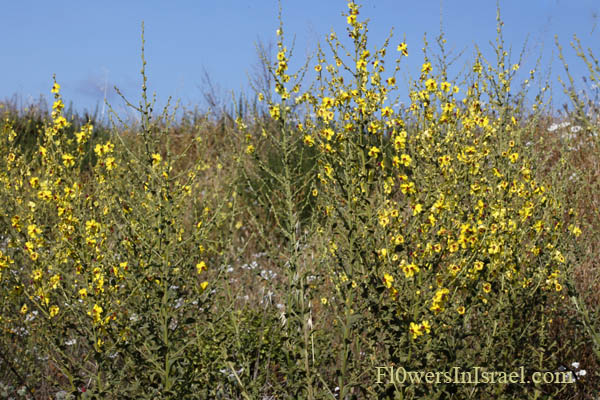
Derivation of the botanical name: Verbascum, mullein; corrupted form of barbascum, from the Latin barba (a beard), in allusion to the shaggy foliage; the ancient Latin name for this plant. sinuatum , sinuate, with a wavy margin; wavy edged. The Hebrew name: בוצין, busin, Aramaic בוצינא, būṣīnā, a wick, a lamp, because of the shape of the flower.
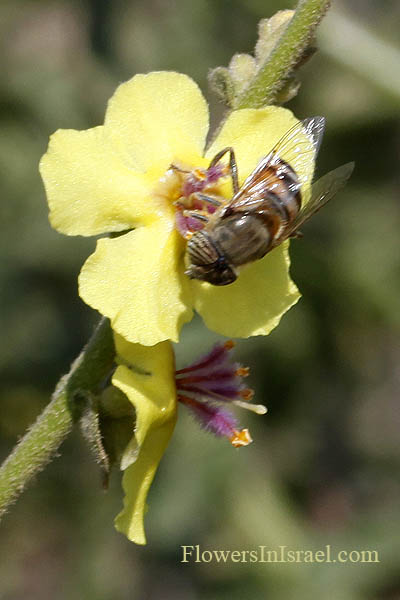
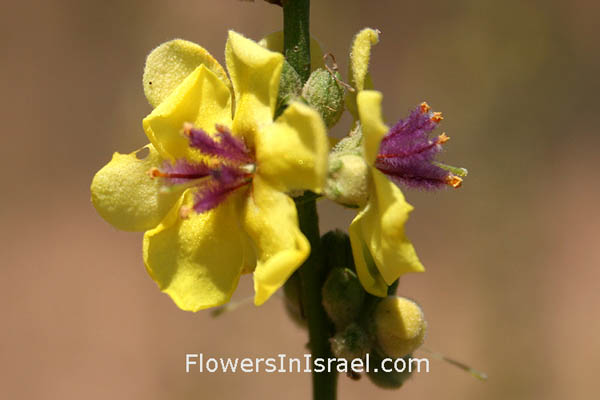
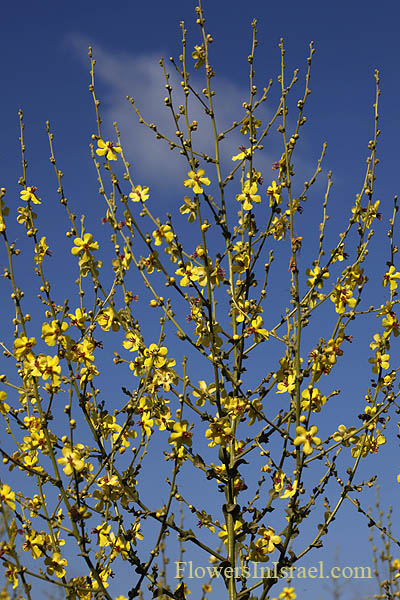
|